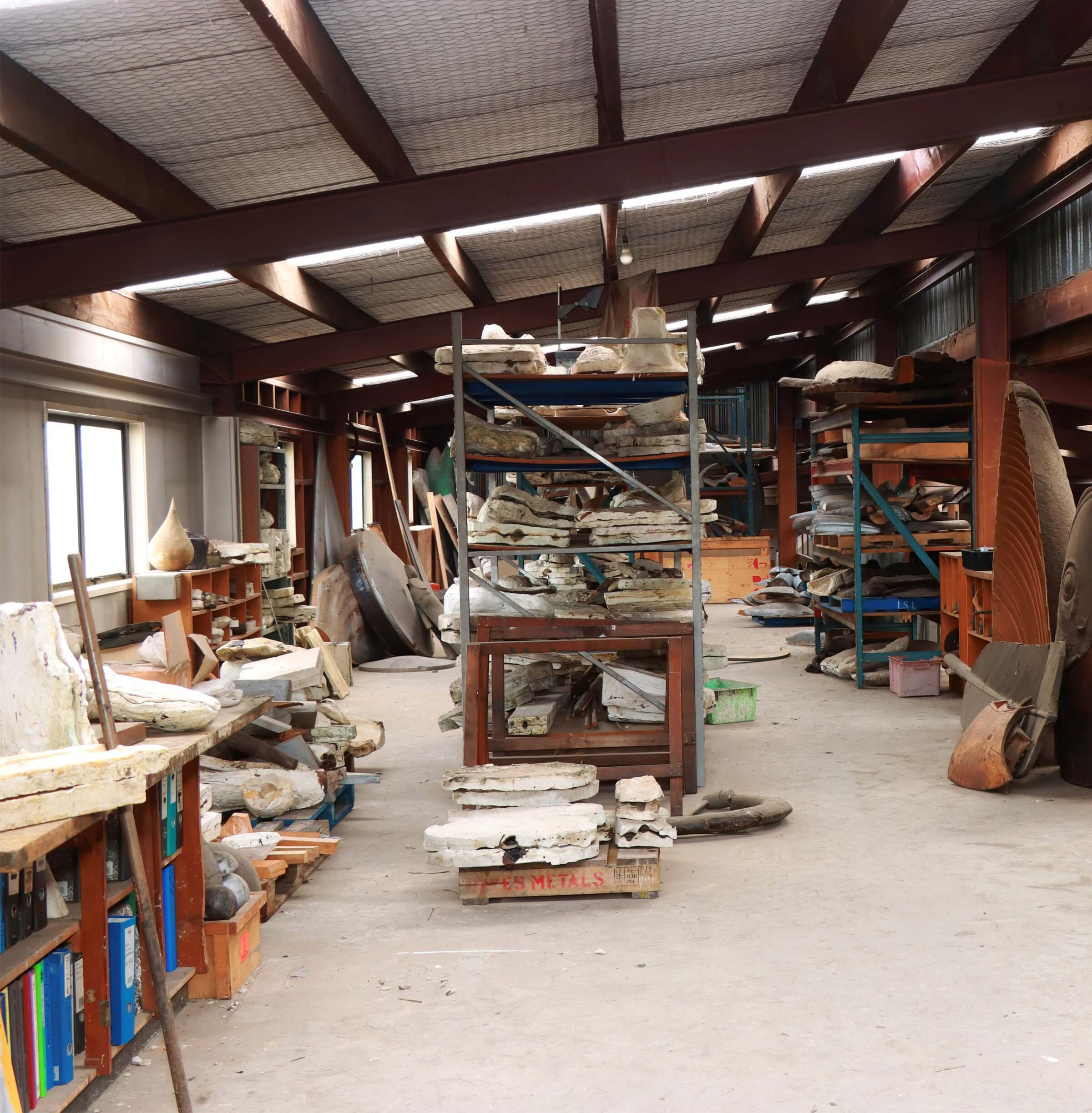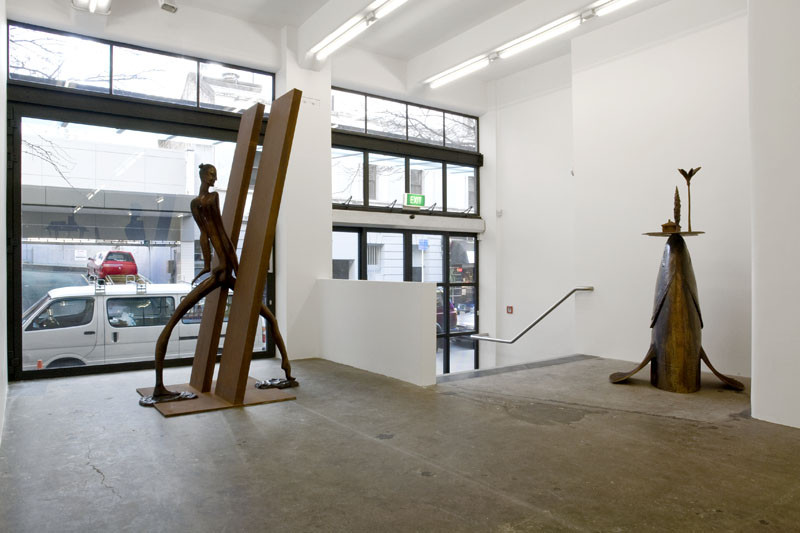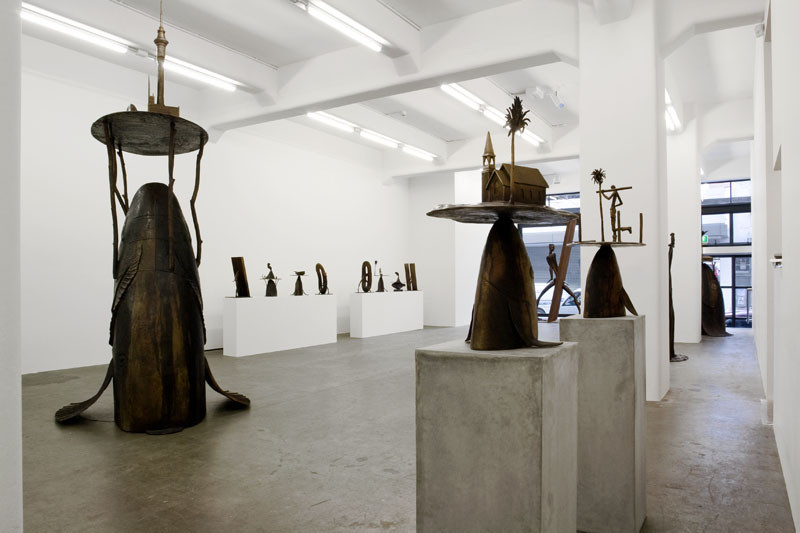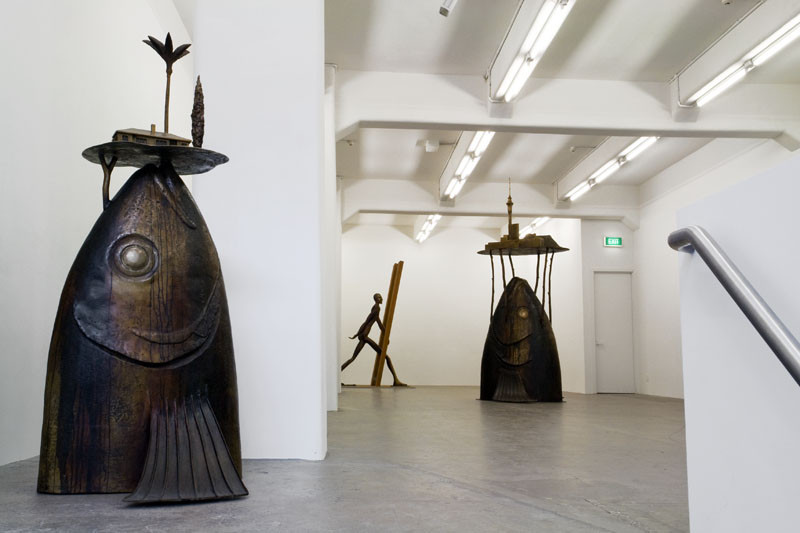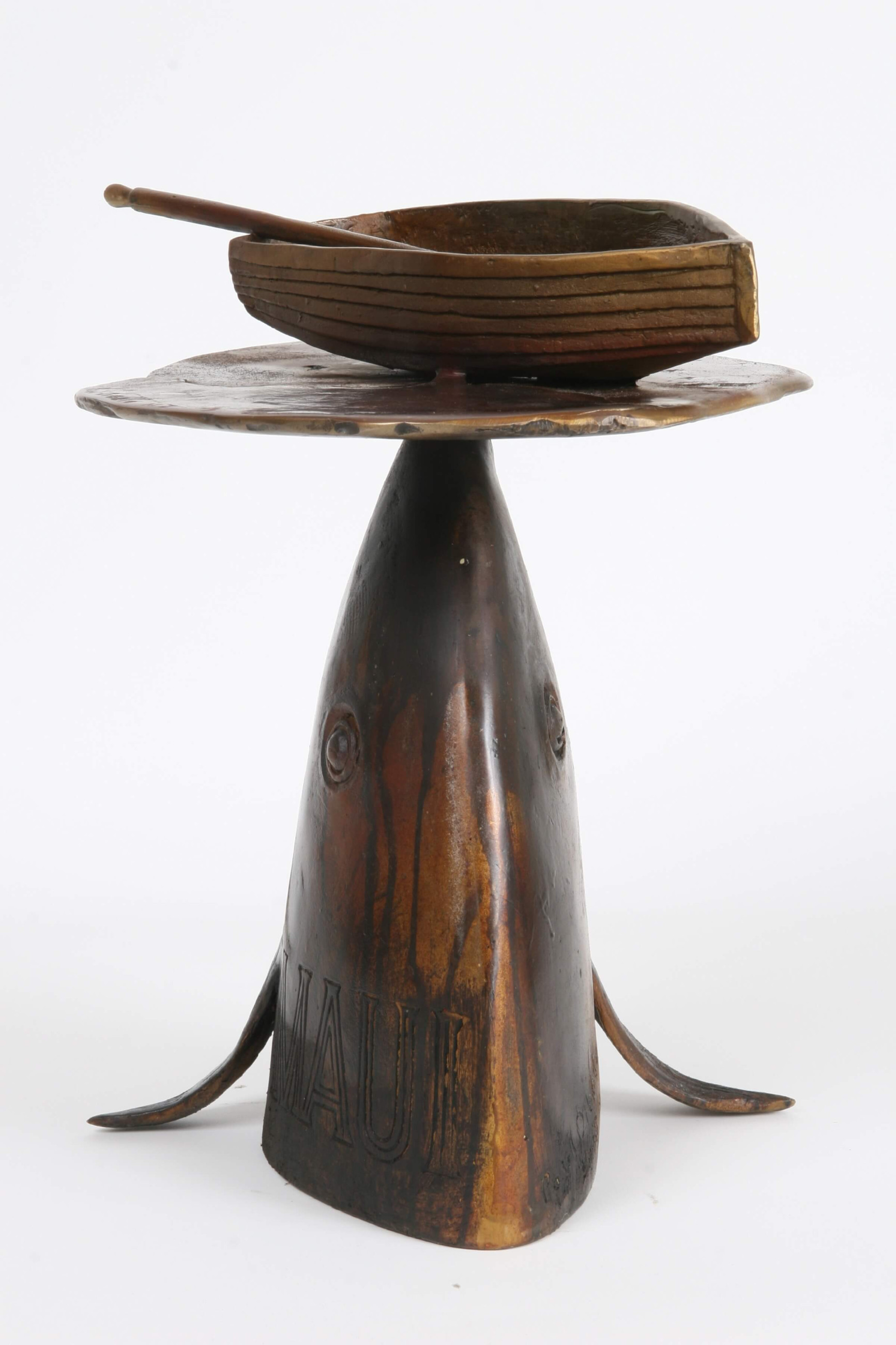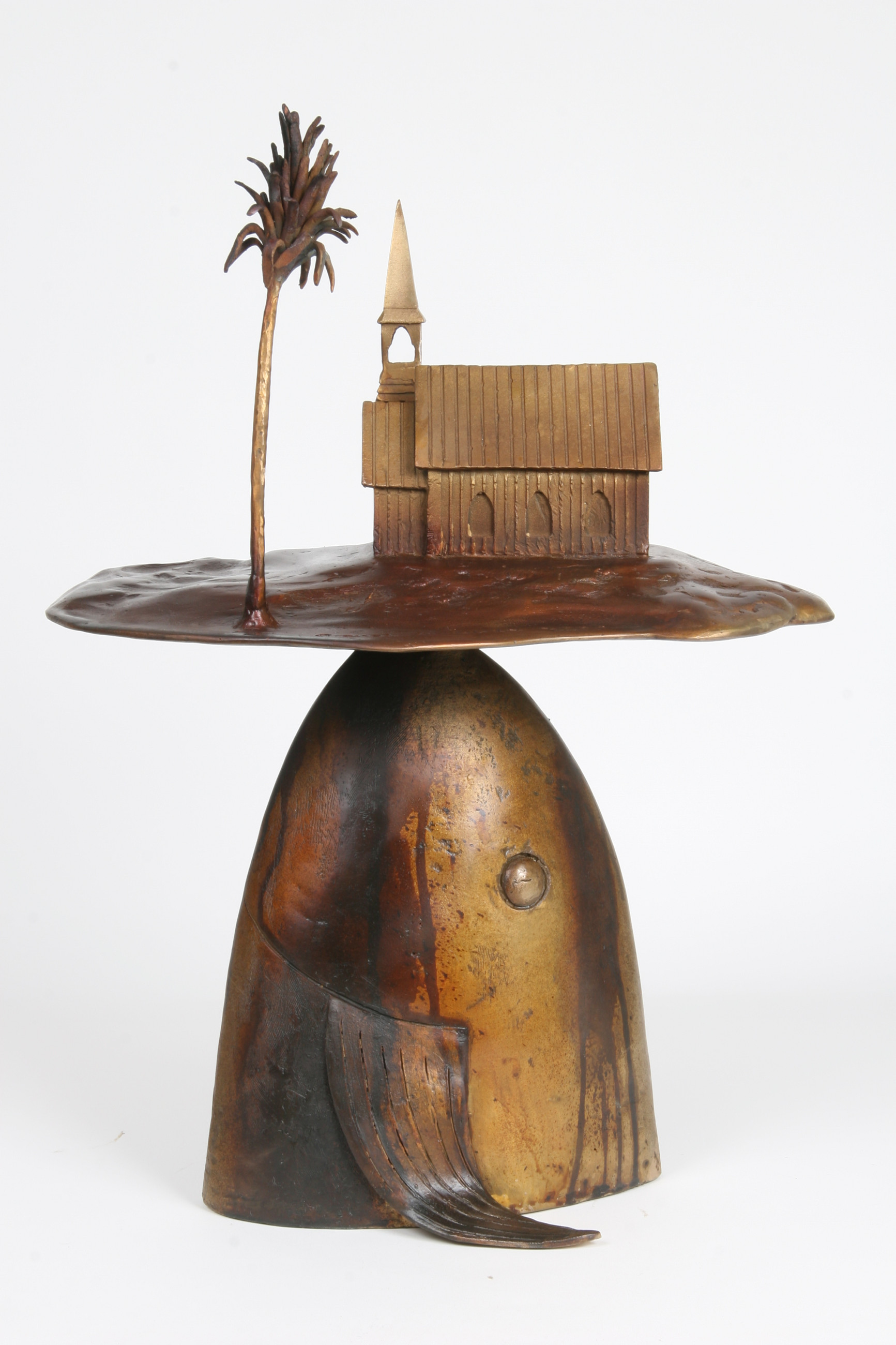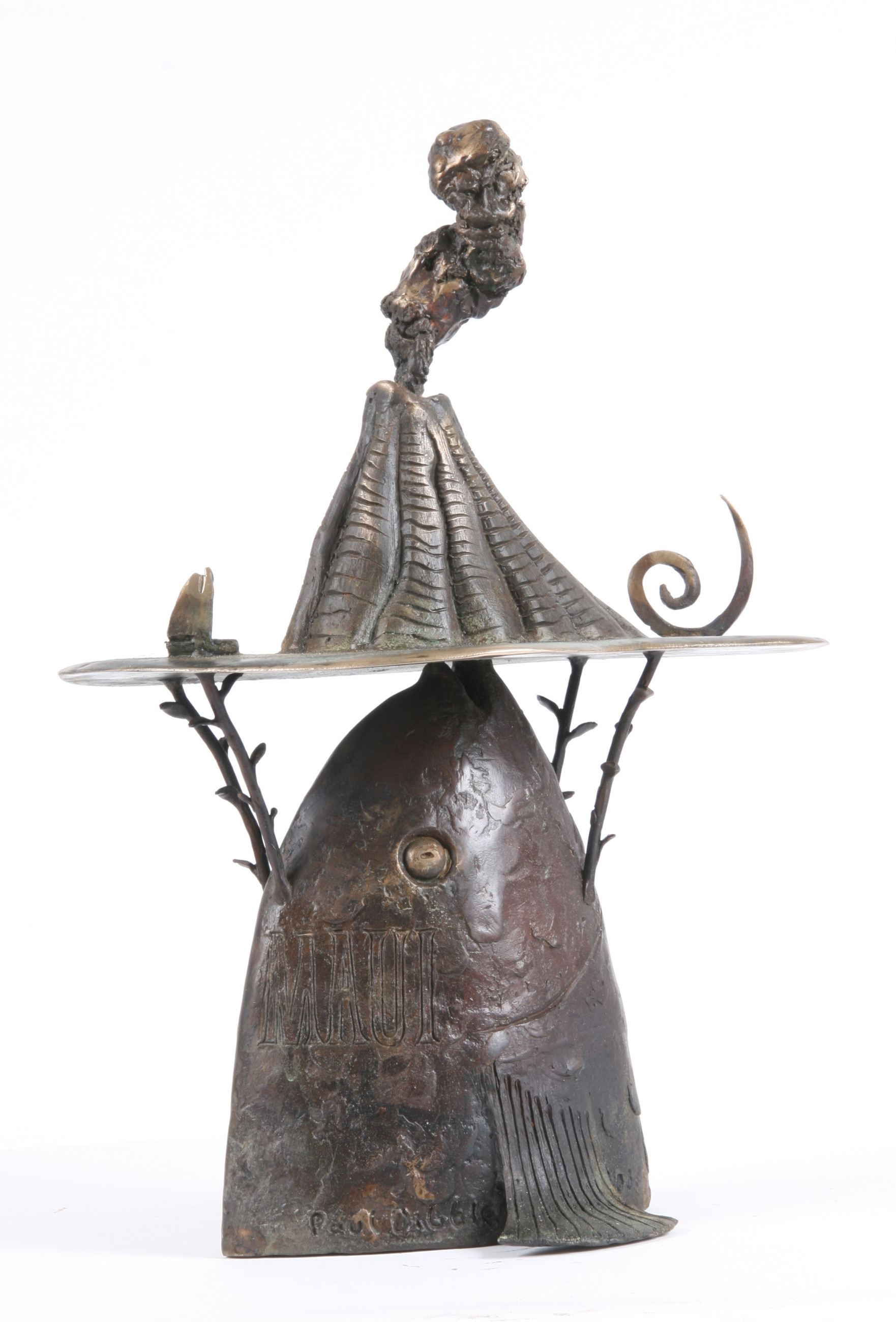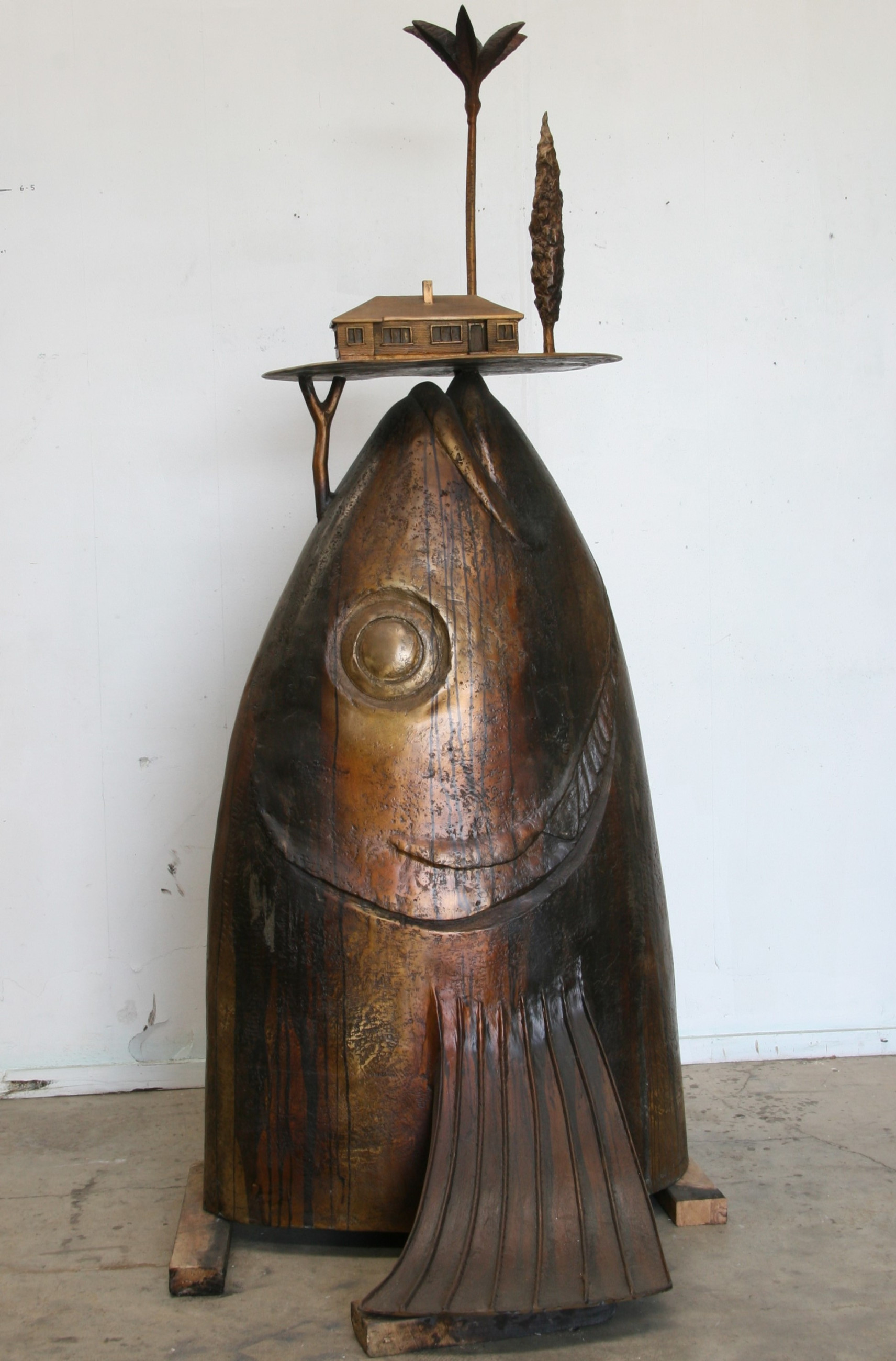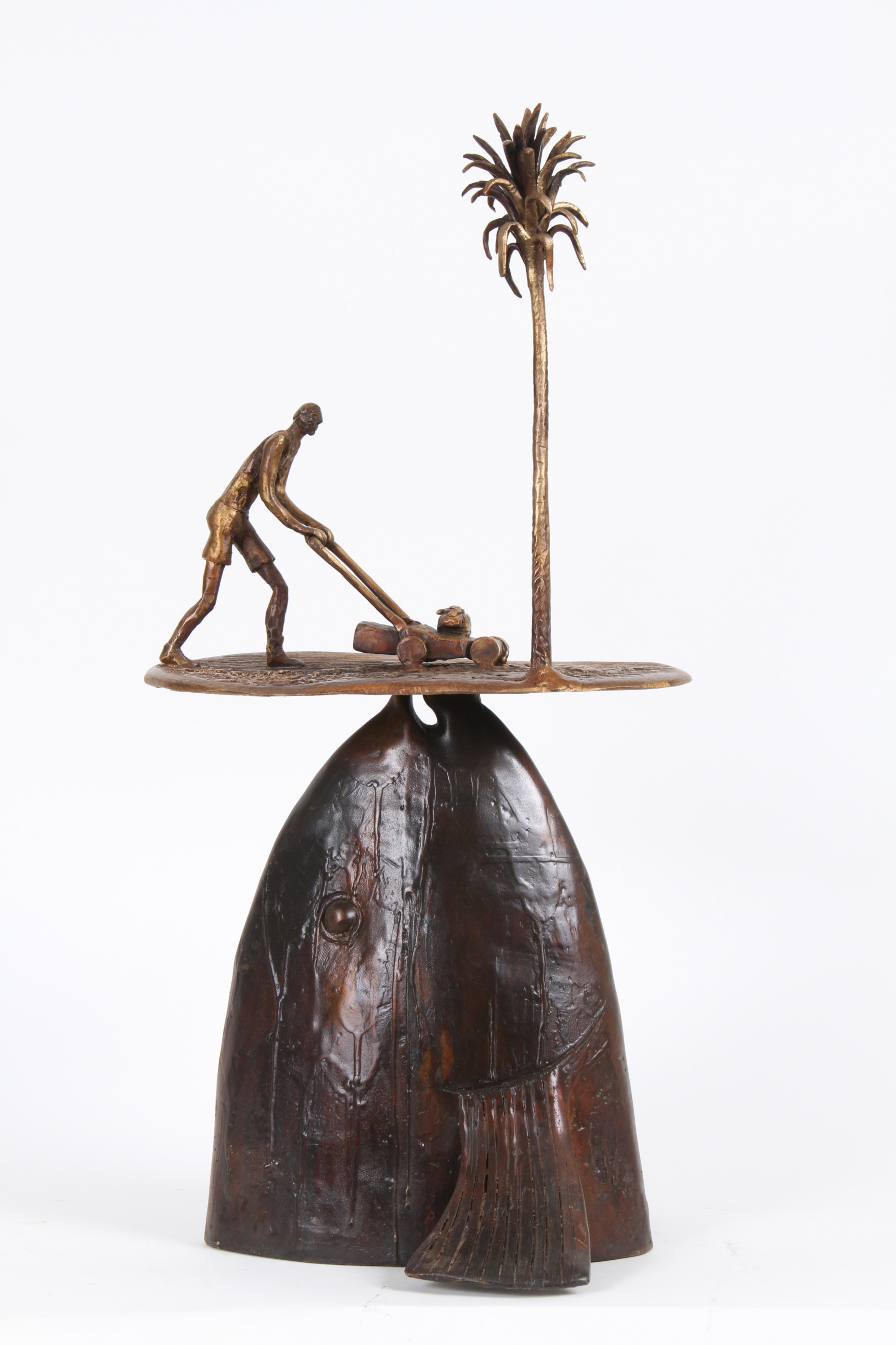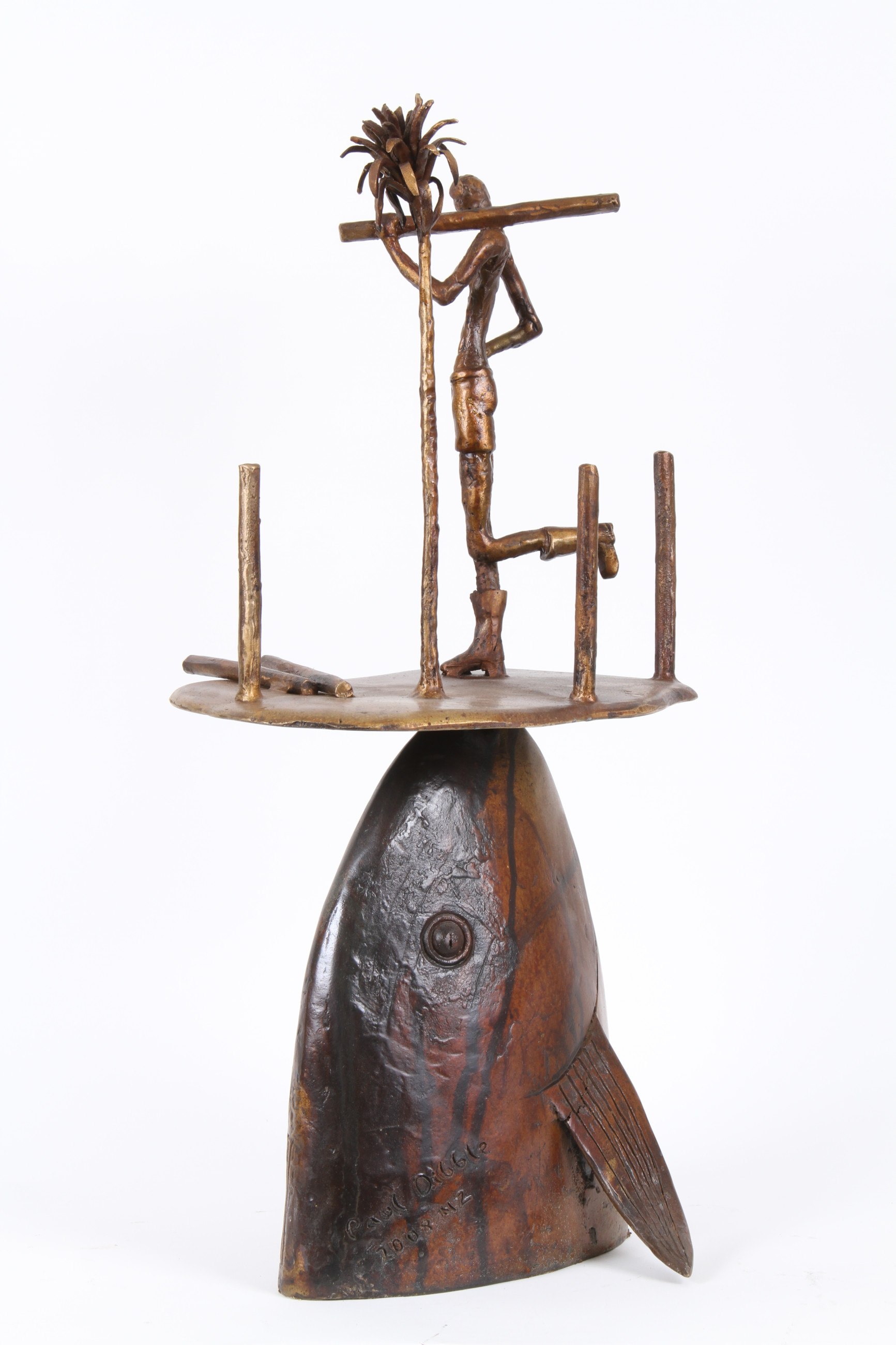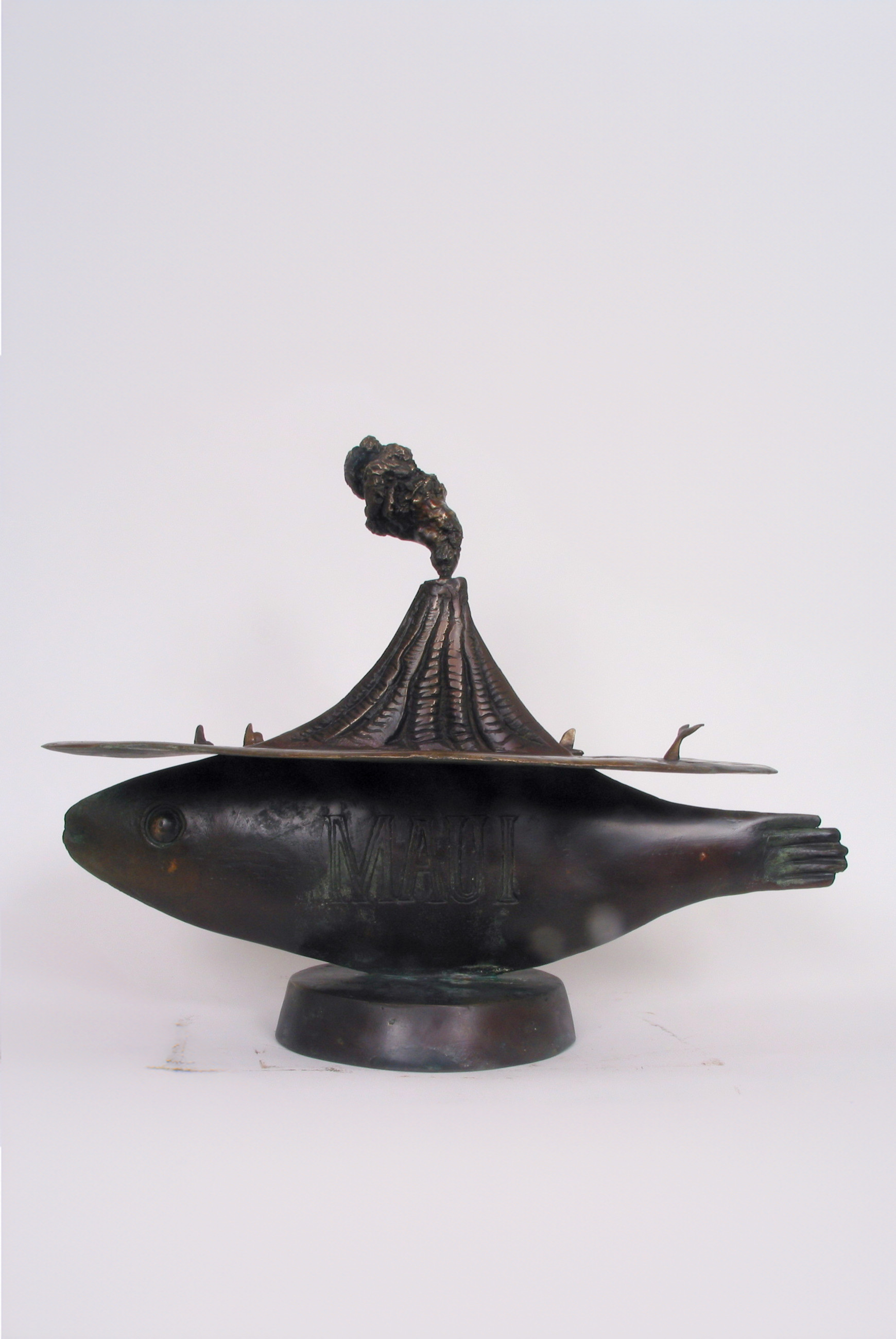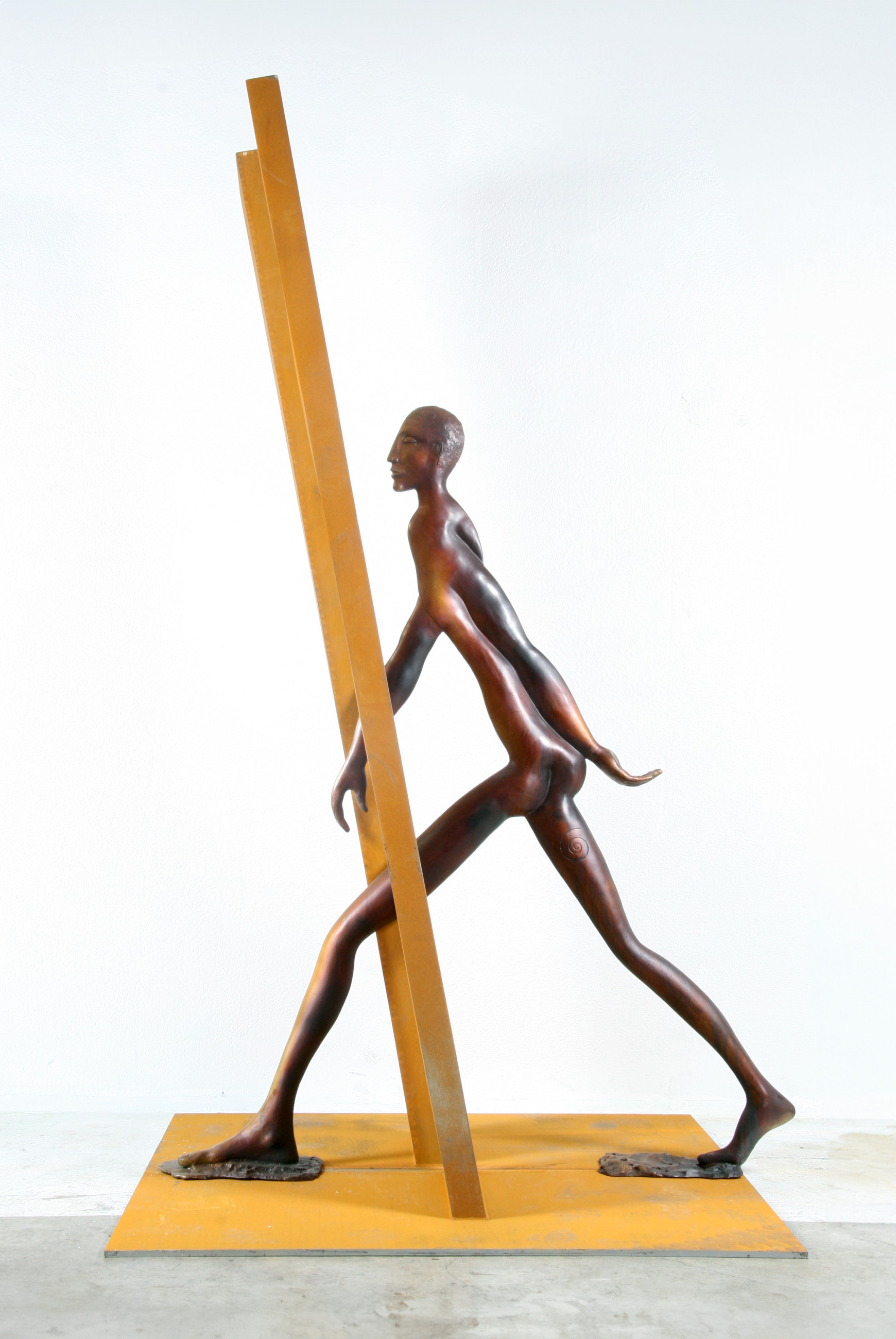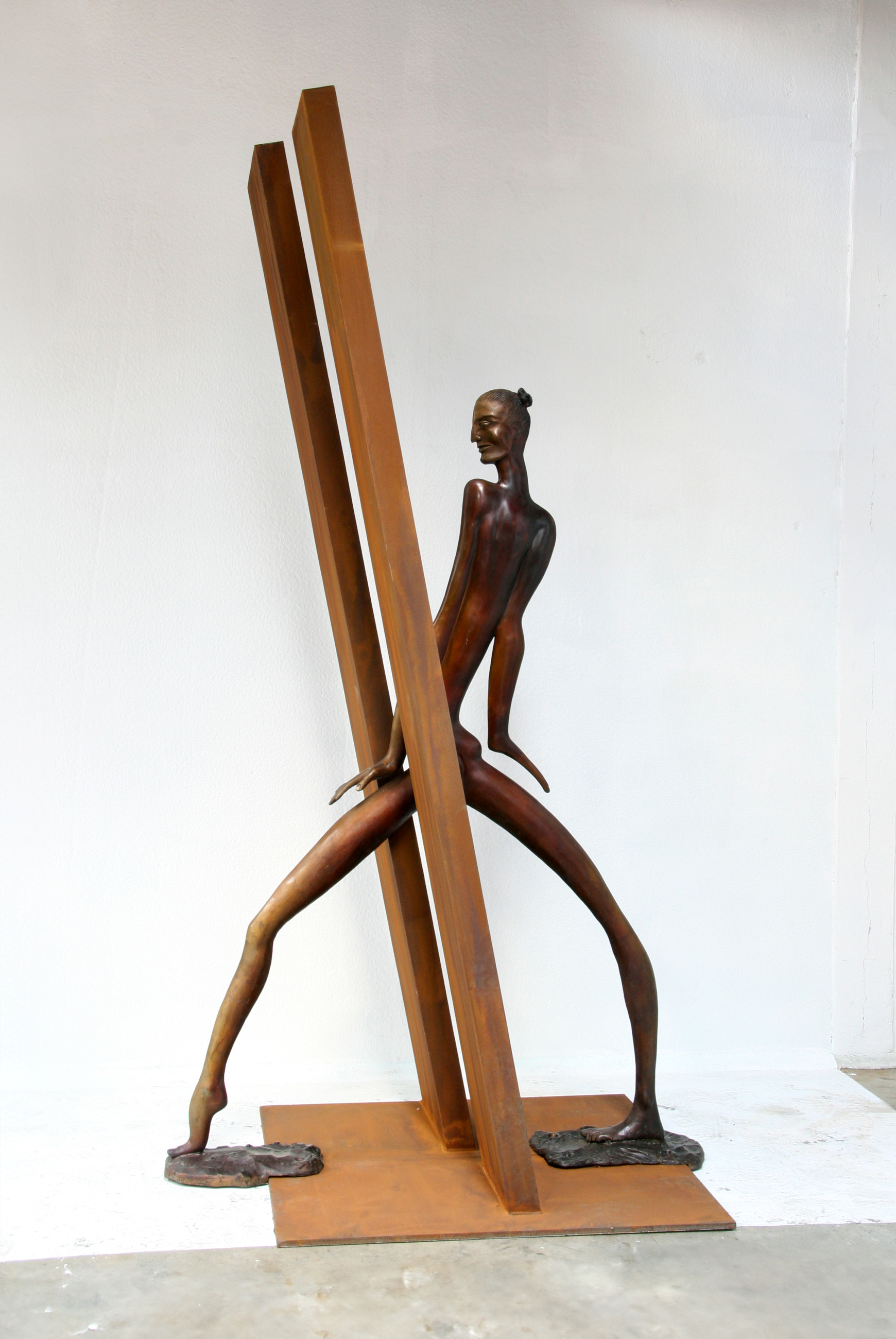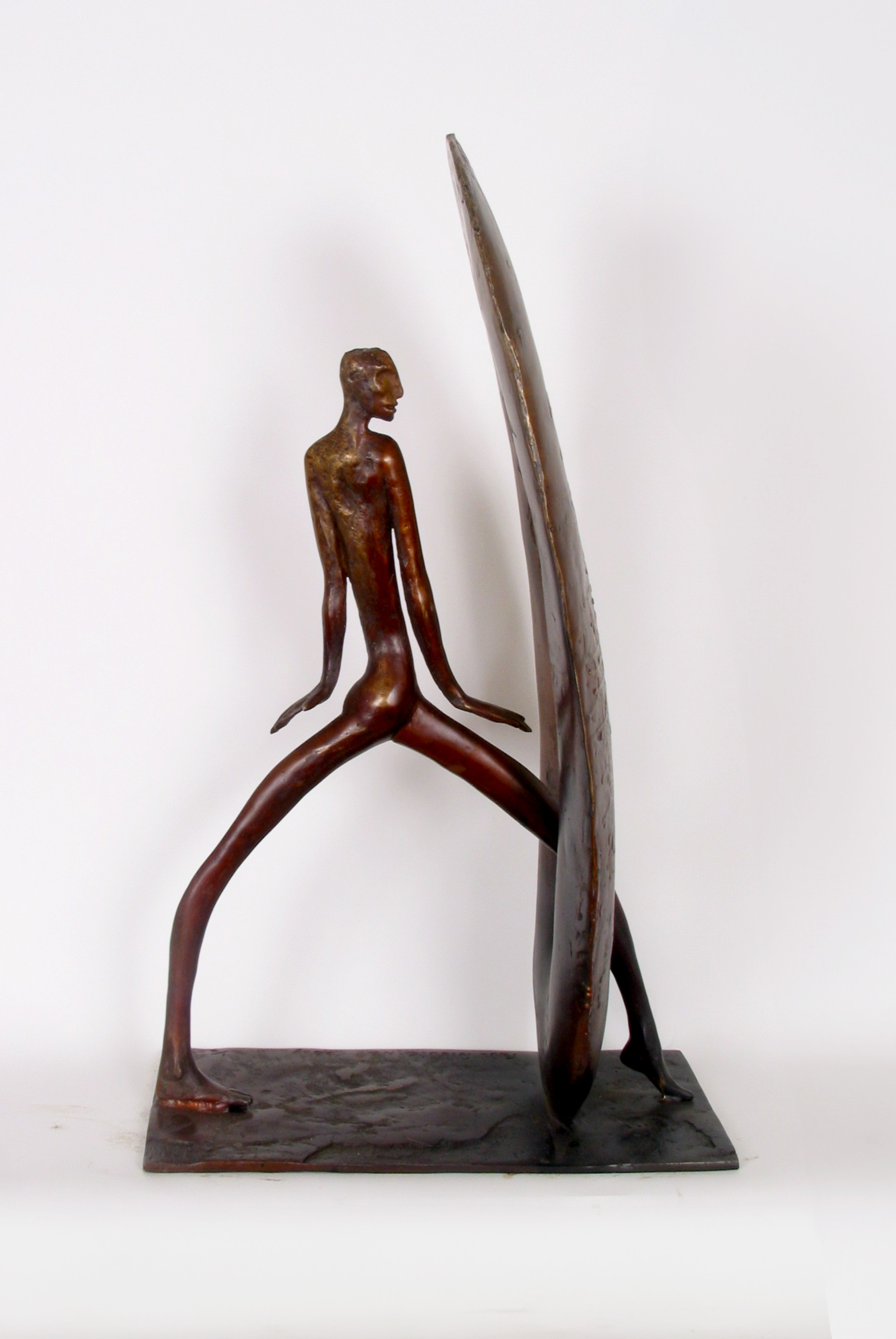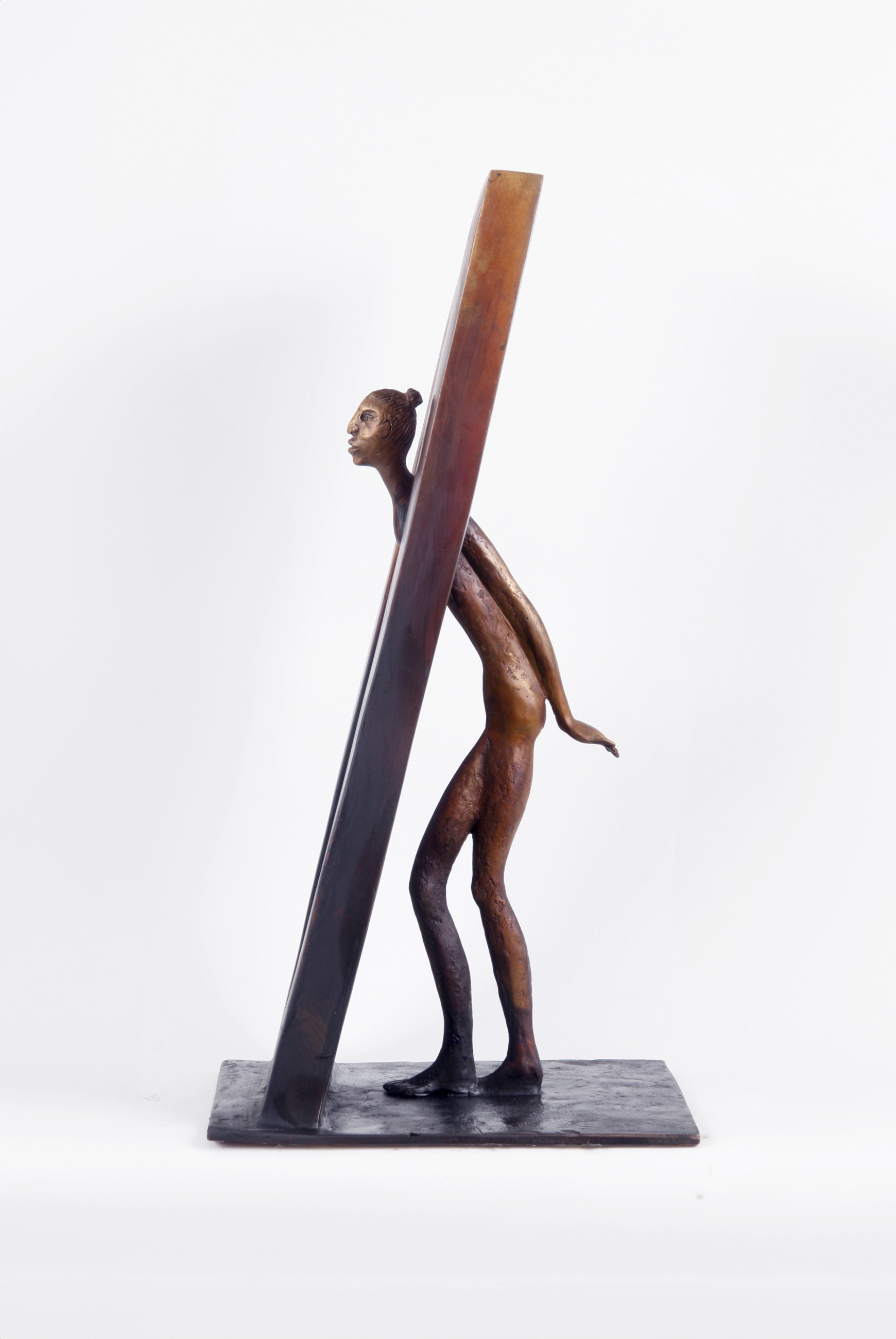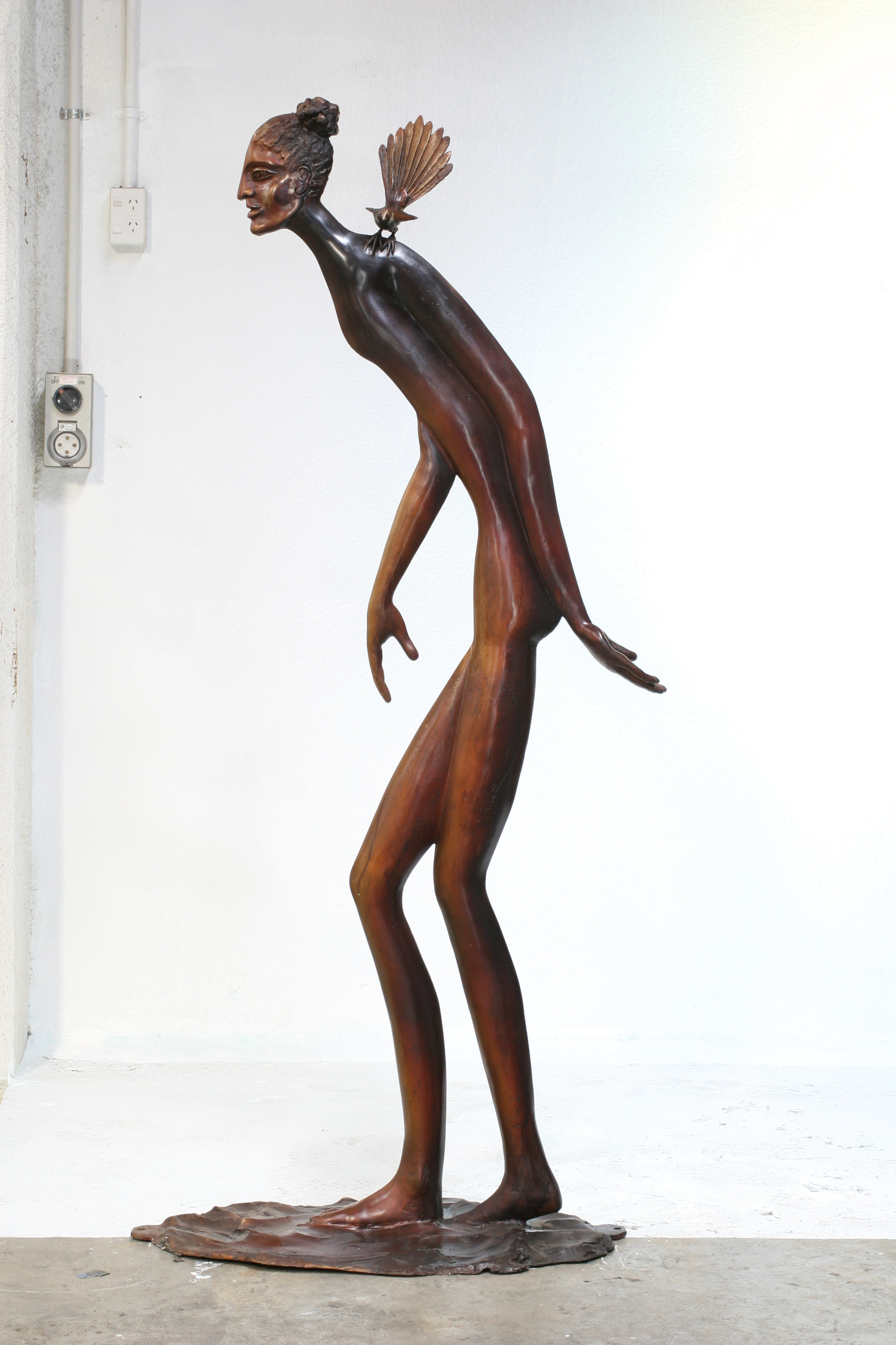June 3 - June 27, 2008 Paradise
June 3 - June 27, 2008 ParadiseSolo, Gow Langsford Gallery, Auckland
Text
Creation narratives and accounts of immortality are widespread among cultures throughout the world. A legacy of generations past, these stories provide a way for humans to rationalize their existence, the world’s origins, and to offer possibilities for what lies beyond death after passing into the unknown. Within New Zealand Māui reigns as the demi-God of favour, his antics and mischievous character a feature of many of this hero’s exploits. While god-like in his abilities, he is emphatically human in his emotions. For this exhibition at Gow Langsford Gallery simply entitled “Paradise”, Paul Dibble has produced a series of bronze sculptures that explore these emblematic narratives. The exhibition, in a sense, is comprised of two parts: beginnings (tales of creation) and endings (tales of moving to the afterlife).
The great creation stories of Māui fishing up the North Island are a cornerstone of our cultural heritage. They are perhaps more engaging than any discourse involving tectonic plates or seismic activity. Using the fish-head as a foundation, Dibble places upon it iconic snap shots of the country. These depictions present New Zealand as a wonderland: a neglected boat, its oar casually dropped where it has collected rainwater, a small wave lapping at the hull; an archetypal colonial church with endemic cabbage tree typical of a countryside vista – these scenes are part of an ‘idyllic’ New Zealand that some fear may one day be lost. As homage, Dibble captures these scenes in the permanence of bronze so that they may endure as everlasting tributes.
This is Māui’s fish; his name engraved on its side and playfully on puckered lips, symbolic microcosms are balanced. The fish surges upwards pushing forth depictions of an idealized land – small pieces of the New Zealand dream that have emerged from the Pacific Ocean. In the humbly titled Home an enormous fish head becomes an elaborate stanchion for the New Zealand quarter-acre section complete with state house. Gargantuan in form, City on a Fish reaches a height of nearly four metres, the head of the fish supporting an urban cityscape silhouetted upon its plateau. It is the landscape of Auckland readily distinguished by depictions of the Sky Tower and Mount Eden.
The fish-head is symbolic of all those undercurrents that are submerged – “there is more beneath the surface than meets the eye”. In the world concealed below, legends lurk in the depths and floating upon them is the land we know today. Aesthetically the sculptural constructions maintain an upward vertical thrust. The fish swimming up, and the expressive, fiery patina loosely applied with drips and runs, contrast with the serene calm of the horizontally structured scenes above.
The other half of the exhibition presents a series of figures that encapsulate Māui’s efforts to obtain immortality by cheating death, journeys which are paralleled in the epic pursuits of ancient Roman and Greek legend. In Māui’s case a union with Hine-Nui-Te-Po (Goddess of Death) is the defying act to gain eternal life and the status of a full god. To achieve this he must enter her body while she slumbers, however as the story ends, the Goddess is woken by a tittering fantail and Māui’s attempts are foiled.
These sculptures portray the journey into an afterlife, whether as bravely leaping, in the languid movement of Through the Gap, or in the half daze as embodied in The Sleepwalker. The figures are flanked by thick slabs of Corten steel forming architectural structures that function as entrance-ways. These oblique protrusions echo similar forms used in Dibble’s famous New Zealand Memorial at Hyde Park Corner in London. With its more granular texture and edges that are sharp and precise, these steel slabs contrast with the smooth bronze figures moving through them, making them appear even silkier, fluid and round. The figures themselves are modelled in semi-relief. From the side each form is resolutely defined though when viewed from the front they transform, revealing linear projections with thin, sensual, organic undulations.
In some of these characterizations, Māui’s face, if indeed this is Māui making the leap into the unknown, is possessed of a regal, stylised appearance. His profile resembles the famous Parkinson drawings sketched on Cook’s voyage which have since immortalized those first meetings. Proud and gallant, they remind us of the characters in these stories, ritualized as though dreamed up; chronicles re-counted and acted out before us.
And so welcome to “Paradise” – New Zealand perched on a fish in that brief interlude between the beginning and the end, which humankind will forever seek to understand.
